文章
Dummer. ゛☀
2017年10月08日

Theese tough, dependable, long-lived perenniaal make an impressive statement in the garden, growing as much as 3 to 4 feet tall. The most common species found in gardens baptisia, also known as blue wild indigo, has spires of blue flowers in late spring and early summer and was used by early American colonists as a dye plant. But other species and hybrids bloom in a wide variety of colors.

About baptisias
Baptisias are native to the central and southeastern U.S. In spring and early summer, their clover-like foliage is topped by spires of pea-like blooms. Baptisias grow slowly at first, but after a few years forms an attractive, upright mound up to 4 feet across. A mass planting of baptisia in full bloom is a striking sight. Both the flowers and the seed pods are attractive in bouquets. Hardiness varies with species, but most grow well in Zones 5-8.
Choosing a site to grow baptisias
Baptisias do best in full sun and well-drained soil of average fertility. If planted in part shade they may need staking to prevent sprawling. Once established, they are reasonably drought tolerant.

Planting Instructions
Container plants can be set out any time during the growing season. Space most plants at least 3 feet apart. Mature plants can be 4 feet wide and resent disturbance, so give young plants plenty of space to grow into. Prepare the garden bed by using a garden fork or tiller to loosen the soil to a depth of 12 to 15 inches, then mix in a 2- to 4-inch layer of compost. Dig a hole twice the diameter of the pot the plant is in. Carefully remove the plant from its container and place it in the hole so the top of the root ball is level with the soil surface. Carefully fill in around the root ball and firm the soil gently. Water thoroughly.
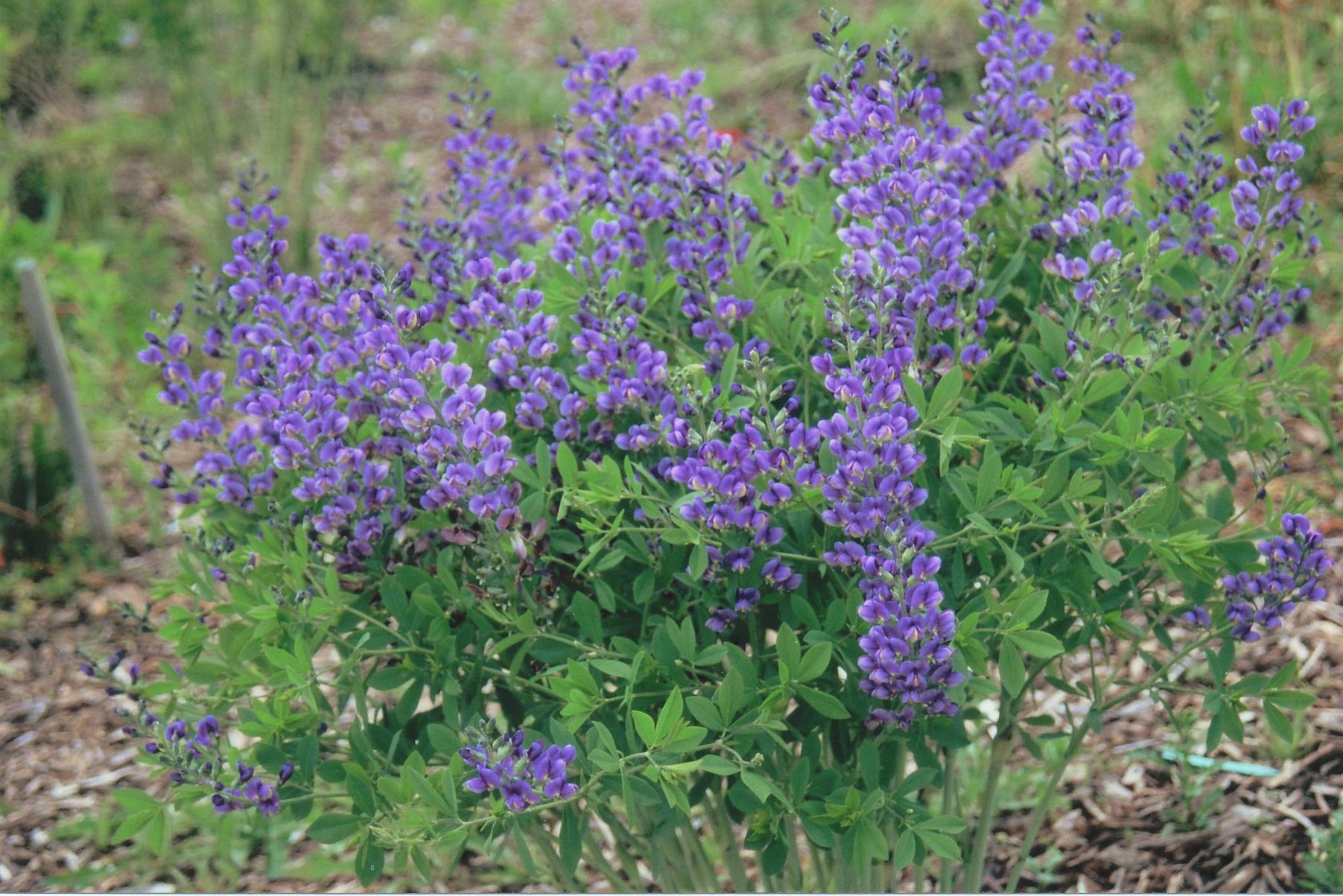
Ongoing Care
Baptisia forms a deep taproot, making it difficult to transplant, so choose the planting site carefully. Unlike many other perennials, baptisia clumps don't need dividing. Although it's possible to divide the deep, gnarly root mass, it's risky and you may end up damaging the plant so much that it can't recover. If you want more plants you can propagate them by seed or cuttings. Baptisias have few insect and disease problems and are usually ignored by deer.

About baptisias
Baptisias are native to the central and southeastern U.S. In spring and early summer, their clover-like foliage is topped by spires of pea-like blooms. Baptisias grow slowly at first, but after a few years forms an attractive, upright mound up to 4 feet across. A mass planting of baptisia in full bloom is a striking sight. Both the flowers and the seed pods are attractive in bouquets. Hardiness varies with species, but most grow well in Zones 5-8.
Choosing a site to grow baptisias
Baptisias do best in full sun and well-drained soil of average fertility. If planted in part shade they may need staking to prevent sprawling. Once established, they are reasonably drought tolerant.

Planting Instructions
Container plants can be set out any time during the growing season. Space most plants at least 3 feet apart. Mature plants can be 4 feet wide and resent disturbance, so give young plants plenty of space to grow into. Prepare the garden bed by using a garden fork or tiller to loosen the soil to a depth of 12 to 15 inches, then mix in a 2- to 4-inch layer of compost. Dig a hole twice the diameter of the pot the plant is in. Carefully remove the plant from its container and place it in the hole so the top of the root ball is level with the soil surface. Carefully fill in around the root ball and firm the soil gently. Water thoroughly.

Ongoing Care
Baptisia forms a deep taproot, making it difficult to transplant, so choose the planting site carefully. Unlike many other perennials, baptisia clumps don't need dividing. Although it's possible to divide the deep, gnarly root mass, it's risky and you may end up damaging the plant so much that it can't recover. If you want more plants you can propagate them by seed or cuttings. Baptisias have few insect and disease problems and are usually ignored by deer.
1
1
文章
Dummer. ゛☀
2017年10月08日

With a light and elegant appearance, baby's breath
is a beautiful bedding plant that can fill your
garden area with tiny clouds of white showy flowers.

About baby's breaths
Most popularly used as a cutting plant, baby's breath is a dense flowering border and bedding plant covered with tiny, loosely-scattered, white flowers. You can purchase both annual or perennial varieties. Perennial baby's breath will bloom for a long period during the mid-summer season. The annual plant will bloom for the summer, then die-off, whereas perennial varieties continue to bloom year after year.

Choosing a site to grow baby's breaths
Baby's breath is best grown in full sun, although it will get by with as little as 4 hours of direct sun. In full sun, baby's breath is easy to grow and is drought tolerant as well. It prefers rich, well drained or sandy soil conditions.
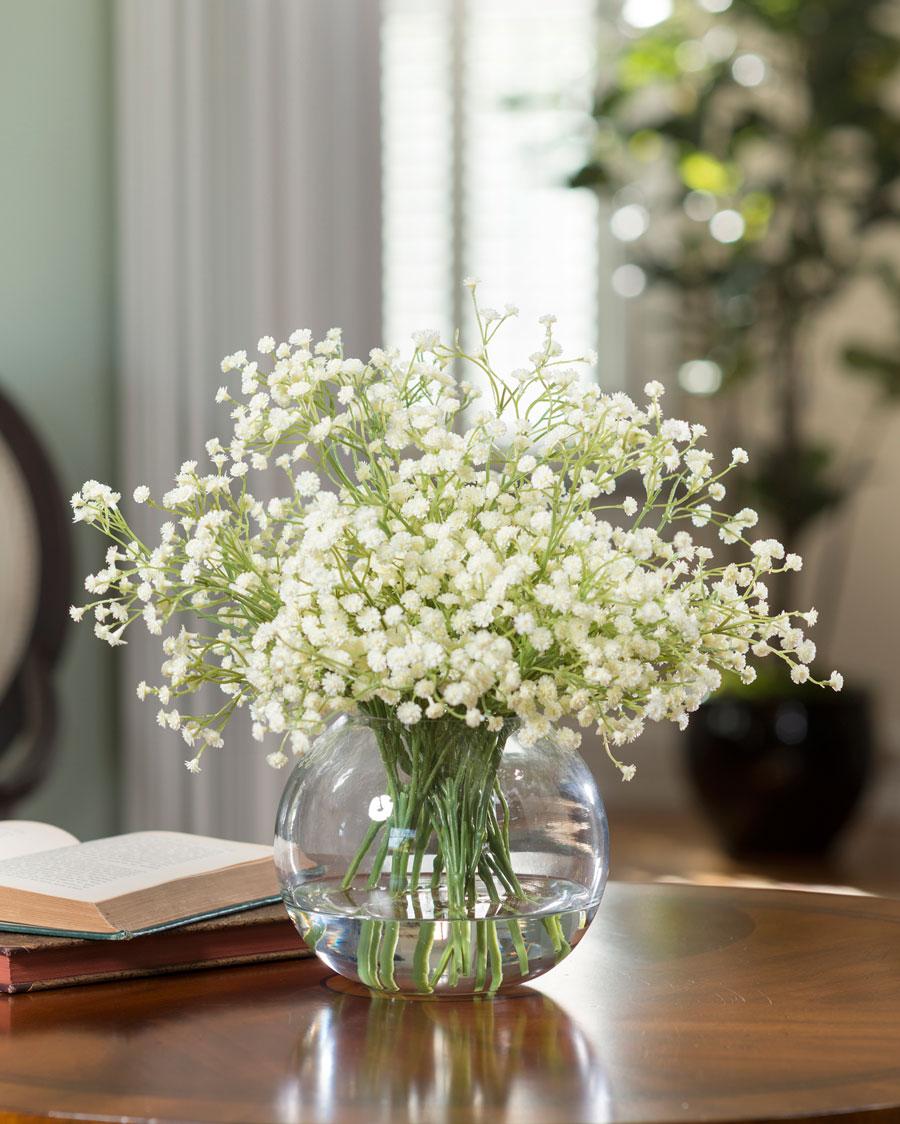
Planting Instructions
Plant baby's breath in early spring. Plant at the same depth that the plant was growing in its container. Because baby's breath is susceptible to stem rot, be sure to grade the soil away from the plant to help prevent water collecting and damaging the plants.
Ongoing Care
Staking will help support the plant, but because the plant is so brittle, be sure to stake baby's breath plants well before the summer blooms appear to avoid damaging the plant. In cooler climates, mulch your perennial baby's breath in the fall to help protect the plant during the winter period.
is a beautiful bedding plant that can fill your
garden area with tiny clouds of white showy flowers.

About baby's breaths
Most popularly used as a cutting plant, baby's breath is a dense flowering border and bedding plant covered with tiny, loosely-scattered, white flowers. You can purchase both annual or perennial varieties. Perennial baby's breath will bloom for a long period during the mid-summer season. The annual plant will bloom for the summer, then die-off, whereas perennial varieties continue to bloom year after year.

Choosing a site to grow baby's breaths
Baby's breath is best grown in full sun, although it will get by with as little as 4 hours of direct sun. In full sun, baby's breath is easy to grow and is drought tolerant as well. It prefers rich, well drained or sandy soil conditions.

Planting Instructions
Plant baby's breath in early spring. Plant at the same depth that the plant was growing in its container. Because baby's breath is susceptible to stem rot, be sure to grade the soil away from the plant to help prevent water collecting and damaging the plants.
Ongoing Care
Staking will help support the plant, but because the plant is so brittle, be sure to stake baby's breath plants well before the summer blooms appear to avoid damaging the plant. In cooler climates, mulch your perennial baby's breath in the fall to help protect the plant during the winter period.
5
3
文章
Dummer. ゛☀
2017年10月08日

Astilbe produces an attractive mound of glossy, fernlike foliage topped with delicate plumes of colorful flowers. Another common name is false goat's beard.

About astilbes
Astilbe does best in regions with cool, moist summers. The large plumes of frothy flowers arrive in late spring or early summer to brighten shade gardens. Flower colors include pink, red, lavender, and white. The plant grows between 6 inches and 5 feet tall, depending on the variety. Use in woodland gardens and along waterways with other shade-loving perennials, such as hostas and ferns.
Special features of astilbes
Easy care/low maintenance
Tolerates wet soil
Choosing a site to grow astilbes
Select a site with light to full shade and moist, humus-rich soil. Astilbes may tolerate full sun as long as soil remains consistently moist.
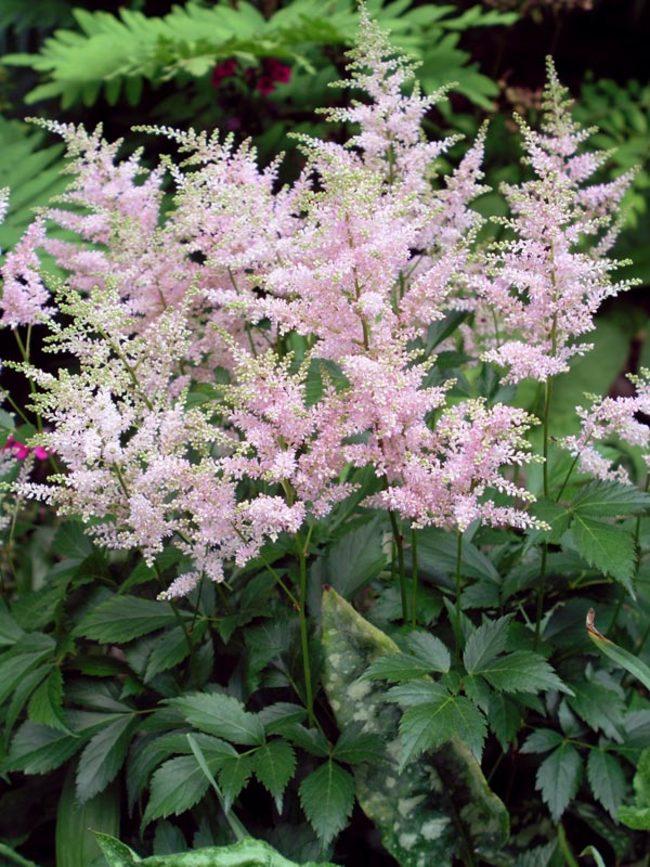
Planting Instructions
Plant in spring or fall, spacing plants 1 to 3 feet apart, depending on the variety. Prepare the garden bed by using a garden fork or tiller to loosen the soil to a depth of 12 to 15 inches, then mix in a 2- to 4-inch layer of compost. Dig a hole twice the diameter of the pot the plant is in. Carefully remove the plant from its container and place it in the hole so the top of the root ball is level with the soil surface. Carefully fill in around the root ball and firm the soil gently. Water thoroughly. If planting bare-root plants, dig a hole twice as wide as your plants and 4 to 6 inches deep. Position the fibrous roots in the hole so that the crown is 1 to 2 inches below ground level. Cover with soil and press firmly.

Ongoing Care
Apply a thin layer of compost each spring, followed by a 2-inch layer of mulch to retain moisture and control weeds. Water plants during the summer if rainfall is less than 1 inch per week. Astilbes multiply rapidly. Divide plants every 3 to 4 years as new growth begins in the spring, lifting plants and dividing them into clumps.

About astilbes
Astilbe does best in regions with cool, moist summers. The large plumes of frothy flowers arrive in late spring or early summer to brighten shade gardens. Flower colors include pink, red, lavender, and white. The plant grows between 6 inches and 5 feet tall, depending on the variety. Use in woodland gardens and along waterways with other shade-loving perennials, such as hostas and ferns.
Special features of astilbes
Easy care/low maintenance
Tolerates wet soil
Choosing a site to grow astilbes
Select a site with light to full shade and moist, humus-rich soil. Astilbes may tolerate full sun as long as soil remains consistently moist.

Planting Instructions
Plant in spring or fall, spacing plants 1 to 3 feet apart, depending on the variety. Prepare the garden bed by using a garden fork or tiller to loosen the soil to a depth of 12 to 15 inches, then mix in a 2- to 4-inch layer of compost. Dig a hole twice the diameter of the pot the plant is in. Carefully remove the plant from its container and place it in the hole so the top of the root ball is level with the soil surface. Carefully fill in around the root ball and firm the soil gently. Water thoroughly. If planting bare-root plants, dig a hole twice as wide as your plants and 4 to 6 inches deep. Position the fibrous roots in the hole so that the crown is 1 to 2 inches below ground level. Cover with soil and press firmly.

Ongoing Care
Apply a thin layer of compost each spring, followed by a 2-inch layer of mulch to retain moisture and control weeds. Water plants during the summer if rainfall is less than 1 inch per week. Astilbes multiply rapidly. Divide plants every 3 to 4 years as new growth begins in the spring, lifting plants and dividing them into clumps.
2
0
文章
Dummer. ゛☀
2017年10月08日

The brilliant flowers of asters brighten the fall garden when little else is blooming. Indeed, "aster," the Latin word for "star," aptly describes the starry flower heads.

About asters
Aster thrives under a wide range of conditions. Plant height ranges from 8 inches to 8 feet, depending on variety. Tall varieties make good back-of-the-border plants and are also attractive planted in naturalized meadows.

Special features of asters
Attracts butterflies.
Choosing a site to grow asters
Dependent on species. Some prefer full sun, others require shade. Some types of asters grow in wetlands, others are suitable for xeriscaping.
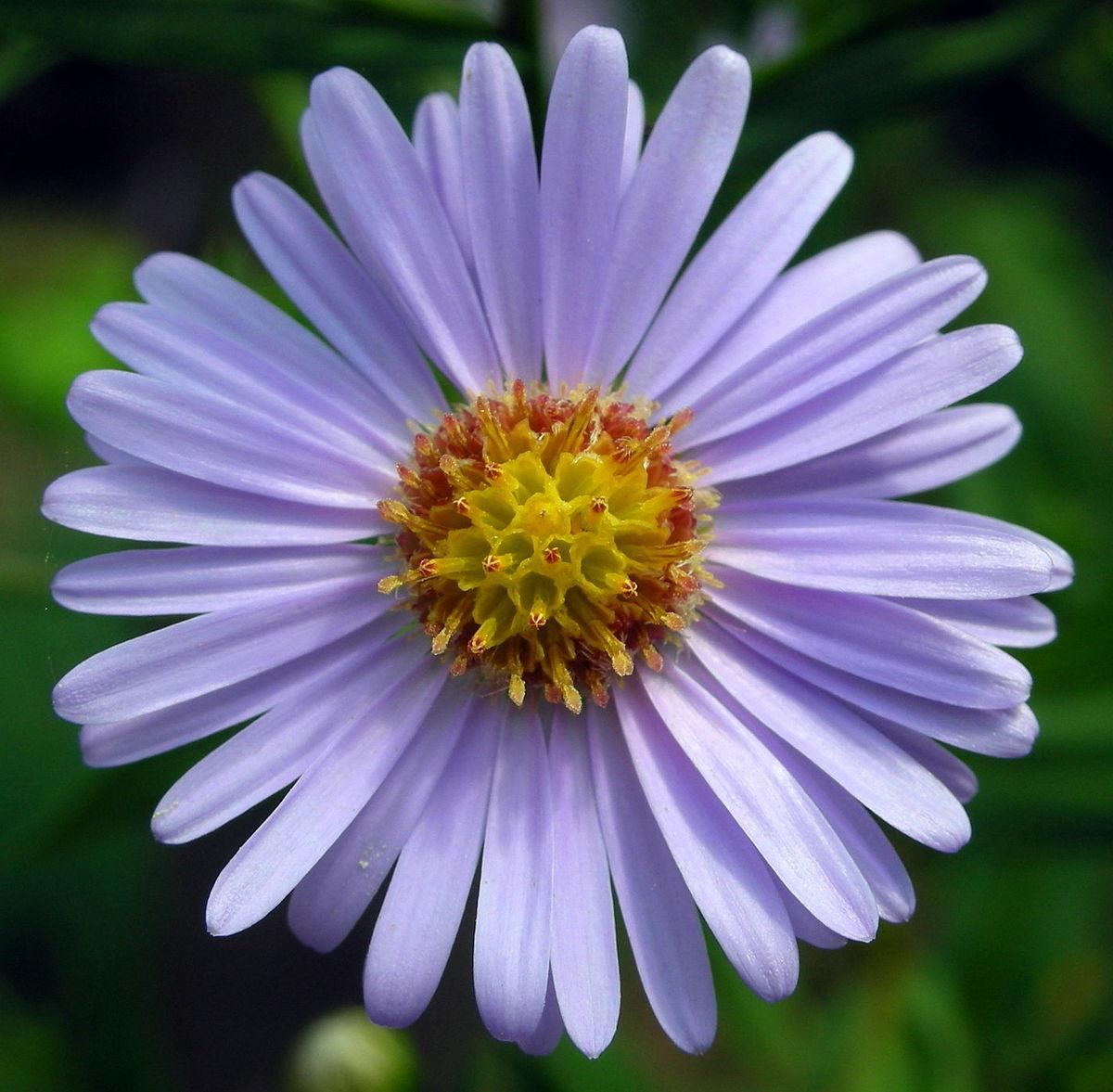
Planting Instructions
Plant in spring, spacing plants 1 to 3 feet apart, depending on the variety. Prepare garden bed by using a garden fork or tiller to loosen the soil to a depth of 12 to 15 inches, then mix in a 2- to 4-inch layer of compost. Dig a hole twice the diameter of the pot the plant is in. Carefully remove the plant from its container and place it in the hole so the top of the root ball is level with the soil surface. Carefully fill in around the root ball and firm the soil gently. Water thoroughly.

Ongoing Care
Highly variable, but most asters are carefree.

About asters
Aster thrives under a wide range of conditions. Plant height ranges from 8 inches to 8 feet, depending on variety. Tall varieties make good back-of-the-border plants and are also attractive planted in naturalized meadows.

Special features of asters
Attracts butterflies.
Choosing a site to grow asters
Dependent on species. Some prefer full sun, others require shade. Some types of asters grow in wetlands, others are suitable for xeriscaping.

Planting Instructions
Plant in spring, spacing plants 1 to 3 feet apart, depending on the variety. Prepare garden bed by using a garden fork or tiller to loosen the soil to a depth of 12 to 15 inches, then mix in a 2- to 4-inch layer of compost. Dig a hole twice the diameter of the pot the plant is in. Carefully remove the plant from its container and place it in the hole so the top of the root ball is level with the soil surface. Carefully fill in around the root ball and firm the soil gently. Water thoroughly.

Ongoing Care
Highly variable, but most asters are carefree.
0
0
成长记
cclecombe
2017年10月08日

I have no idea what this will look like once the flowers stop growing but I'm not sure I mind!


1
0
成长记
Ueca
2017年10月07日

The flowers are actually red, and their shape affirms that this is Echeveria.




2
0
成长记
Ueca
2017年10月07日

Flowers! They're bigger than I expected; over 1 cm each. I'm debating about whether or not I should remove the flower stem from the second one as it seems to be taking a toll on its vigour.
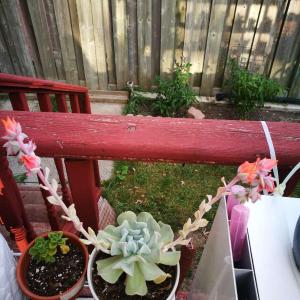

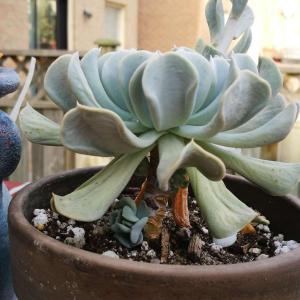





1
0
成长记
Ueca
2017年10月07日

Flowers; stage 2. To be honest, they're quite unpleasant, as they smell like dirty socks.
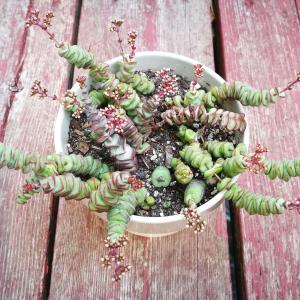



1
0
成长记
riverrun
2017年10月05日

the flowers of lemon trees smell soo intense and good. i really think they should be a "bigger thing"


1
0
文章
Dummer. ゛☀
2017年10月02日

False Peyote (Ariocarpus fissuratus) is a small cactus that grows only a few centimeters in height and about 4-6 inches in diameter. Its nodes end in pointed triangles, giving the cactus a star-like appearance. The flowers are pink-violet in color. These little cacti are often mistaken for rocks in the stony desert in which they grow and are therefore difficult to find. Ariocarpus fissuratus is found only in New Mexico, northern Mexico and southwest Texas.
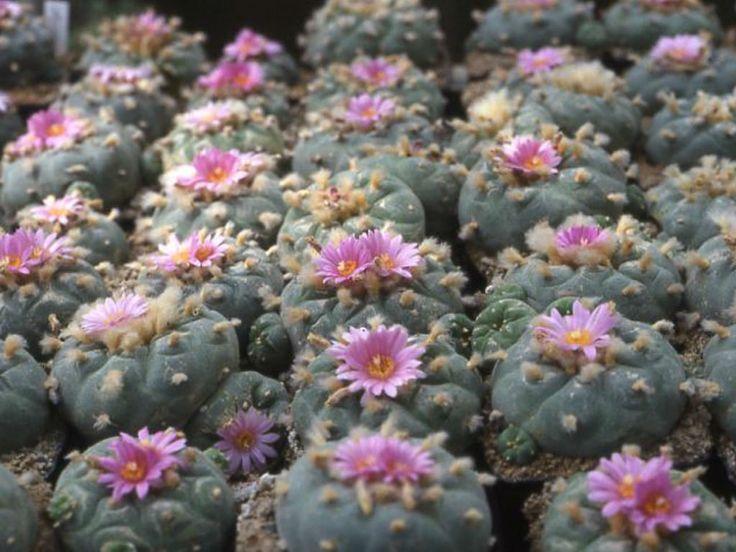
Traditional Uses
Ariocarpus fissuratus is usually referred to as false or dangerous Peyote, and has been known in the Americas since pre-Columbian times. This cactus was very possibly used as a Peyote substitute when Peyote was unavailable. The Huichol strongly warn against consuming Ariocarpus fissuratus, and associate it with dark sorcery. They believe that those individuals who do not properly purify themselves at the start of the Peyote hunt pilgrimage by admitting all of their sexual encounters outside of marriage may mistake Ariocarpus fissuratus for real Peyote, the consumption of which will result in a deliriant-hallucinogenic state. The Tarahumara, meanwhile, consider they to be even more powerful than Peyote.
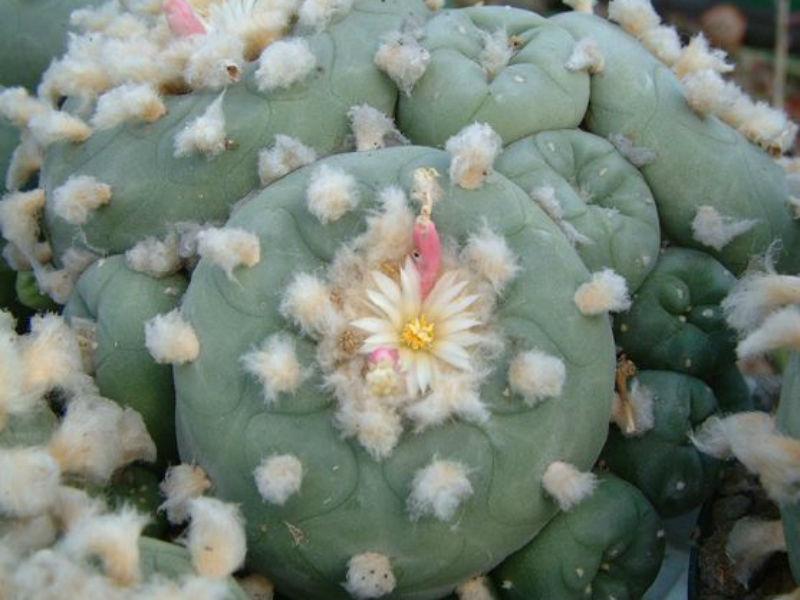
Medicinal Uses
Ariocarpus fissuratus, and the related Ariocarpus retusus may have been used to treat malaria by some peoples in Mexico. The related Ariocarpus kotschoubeyanus is used as an external medicine to treat wounds. Certain reports of the consumption of Ariocarpus fissuratus also mention that it has strong narcotic pain-killing properties.

Traditional Uses
Ariocarpus fissuratus is usually referred to as false or dangerous Peyote, and has been known in the Americas since pre-Columbian times. This cactus was very possibly used as a Peyote substitute when Peyote was unavailable. The Huichol strongly warn against consuming Ariocarpus fissuratus, and associate it with dark sorcery. They believe that those individuals who do not properly purify themselves at the start of the Peyote hunt pilgrimage by admitting all of their sexual encounters outside of marriage may mistake Ariocarpus fissuratus for real Peyote, the consumption of which will result in a deliriant-hallucinogenic state. The Tarahumara, meanwhile, consider they to be even more powerful than Peyote.

Medicinal Uses
Ariocarpus fissuratus, and the related Ariocarpus retusus may have been used to treat malaria by some peoples in Mexico. The related Ariocarpus kotschoubeyanus is used as an external medicine to treat wounds. Certain reports of the consumption of Ariocarpus fissuratus also mention that it has strong narcotic pain-killing properties.
0
1
文章
Dummer. ゛☀
2017年10月01日

False Peyote (Ariocarpus fissuratus) is a small cactus that grows only a few centimeters in height and about 4-6 inches in diameter. Its nodes end in pointed triangles, giving the cactus a star-like appearance. The flowers are pink-violet in color. These little cacti are often mistaken for rocks in the stony desert in which they grow and are therefore difficult to find. Ariocarpus fissuratus is found only in New Mexico, northern Mexico and southwest Texas.
Traditional Uses
Ariocarpus fissuratus is usually referred to as false or dangerous Peyote, and has been known in the Americas since pre-Columbian times. This cactus was very possibly used as a Peyote substitute when Peyote was unavailable. The Huichol strongly warn against consuming Ariocarpus fissuratus, and associate it with dark sorcery. They believe that those individuals who do not properly purify themselves at the start of the Peyote hunt pilgrimage by admitting all of their sexual encounters outside of marriage may mistake Ariocarpus fissuratus for real Peyote, the consumption of which will result in a deliriant-hallucinogenic state. The Tarahumara, meanwhile, consider they to be even more powerful than Peyote.
Medicinal Uses
Ariocarpus fissuratus, and the related Ariocarpus retusus may have been used to treat malaria by some peoples in Mexico. The related Ariocarpus kotschoubeyanus is used as an external medicine to treat wounds. Certain reports of the consumption of Ariocarpus fissuratus also mention that it has strong narcotic pain-killing properties.

Traditional Uses
Ariocarpus fissuratus is usually referred to as false or dangerous Peyote, and has been known in the Americas since pre-Columbian times. This cactus was very possibly used as a Peyote substitute when Peyote was unavailable. The Huichol strongly warn against consuming Ariocarpus fissuratus, and associate it with dark sorcery. They believe that those individuals who do not properly purify themselves at the start of the Peyote hunt pilgrimage by admitting all of their sexual encounters outside of marriage may mistake Ariocarpus fissuratus for real Peyote, the consumption of which will result in a deliriant-hallucinogenic state. The Tarahumara, meanwhile, consider they to be even more powerful than Peyote.

Medicinal Uses
Ariocarpus fissuratus, and the related Ariocarpus retusus may have been used to treat malaria by some peoples in Mexico. The related Ariocarpus kotschoubeyanus is used as an external medicine to treat wounds. Certain reports of the consumption of Ariocarpus fissuratus also mention that it has strong narcotic pain-killing properties.

0
0
文章
Dummer. ゛☀
2017年10月01日

It was said that Quehualliu was the most handsome Indian of the tribe. He was always picking up flowers for Pasancana, the beautiful daughter of the chief. Together they learned how to walk and to play. They played in the most beautiful places of the mountain.
One day when they were older, they fell in love. But Pasancana’s father wanted his daughter to marry another boy in the tribe. This other boy was an excellent hunter. When Pasancana and Quehualliu heard about that, they started to cry, and one day the two decided to escape together.
The next day they were walking in the hills and they made a plan: on the following day when the first star came out they would run away to the mountains. They ran away the following day.
When the chief found out that his daughter wasn’t there, he got mad! He called together a group of men and started looking for the couple.
Pasancana and Quehualliu were tired, so they sat down for a few minutes. They were just going to sleep when a few men came.
Thanks to the light of the full moon they saw the men coming after them and asked the Pachamama, the goddess of the land, to hide them. She took pity on the young lovers and opened a hole in the mountain and hid them there. The chief shouted! “They can’t hide forever!” So he and his men stayed there all that night. The next day the lovers had changed into a cactus, Quehualliu, protected by Pasancana.

One day when they were older, they fell in love. But Pasancana’s father wanted his daughter to marry another boy in the tribe. This other boy was an excellent hunter. When Pasancana and Quehualliu heard about that, they started to cry, and one day the two decided to escape together.
The next day they were walking in the hills and they made a plan: on the following day when the first star came out they would run away to the mountains. They ran away the following day.

When the chief found out that his daughter wasn’t there, he got mad! He called together a group of men and started looking for the couple.
Pasancana and Quehualliu were tired, so they sat down for a few minutes. They were just going to sleep when a few men came.

Thanks to the light of the full moon they saw the men coming after them and asked the Pachamama, the goddess of the land, to hide them. She took pity on the young lovers and opened a hole in the mountain and hid them there. The chief shouted! “They can’t hide forever!” So he and his men stayed there all that night. The next day the lovers had changed into a cactus, Quehualliu, protected by Pasancana.
0
0
文章
Dummer. ゛☀
2017年09月30日

Every month has birth flowers which are a lot easier to give to that special someone! Each month has a couple flowers to choose from.
So if you want to give flowers to someone, but can’t decide which ones, consult the list below and be prepared to be the recipient’s new favorite person!
Birth Month Flowers and their Meanings
January‘s birth flower, the Carnation, comes in several different colors to convey different meanings, much like roses. A pink carnation means affection, while a red carnation means ‘I love you.’ White carnations mean pure love, striped carnations means regret that a love is not shared, and yellow means rejection or disappointment. The other January flower is the Snowdrop, which used to be considered bad luck due to the fact that it would always seem to appear to grow in graveyards. Nowadays, it signifies hope and beauty.
February‘s birth flower is the Violet, which signifies watchfulness, loyalty, and faithfulness. Give a violet to someone to let them know you’ll always be there for them. The other February flower is the Primrose, which lets someone know you can’t live without them.
March‘s birth flower is the Daffodil, which means unequaled love; the sun is always shining whenever your significant other is around. The other March flower is the Jonquil, which signifies desire for affection returned. It also is used to convey sympathy.
April‘s birth flower is the Daisy which conveys innocence, loyal love, and purity. It is also a flower given between friends to keep a secret; the daisy means “I’ll never tell.” The other April flower is the Sweet Pea. Sweet peas signify blissful pleasure, but are also used to say good-bye.
May‘s birth flower is the Lily of the Valley, which signifies sweetness, humility, and a return to happiness. If you want to show your loved one that your life is complete with them, give them a few lilies of the valley. The other May flower is the Hawthorn Plant, which represents hope and supreme happiness. Hawthorne signifies that you want only the best for the recipient.
June‘s birth flower is the Rose, which has more meanings than one can count! A pink rose means perfect happiness, while a red rose means “I love you.” A white rose signifies innocence and purity, while a yellow rose conveys jealousy or a decrease in love. A bouquet of roses means sincere gratitude, whereas a single rose amplifies the meaning of the color (a single red rose means “I REALLY love you”). The other June flower is Honeysuckle, which is a strong symbol for the everlasting bonds of love.
July‘s birth flower is Larkspur. Each color variation of larkspur has a different meaning: pink means fickleness, white conveys a happy nature, and purple normally represents a first love. Generally, larkspur indicates strong bonds of love. The other July flower is the Water Lily, which signifies purity and majesty.
August‘s birth flower is Gladiolus, or ‘Sword Lily’. Gladiolus represents remembrance, calm, integrity, and infatuation. With gladiolus, the recipient’s heart is being “pierced with love.” The other August flower is the Poppy. A red poppy signifies pleasure, a white poppy is given for consolation, and a yellow poppy wishes wealth and success.
September‘s birth flower is the Aster. Asters are mainly symbols of powerful love. The other September flower is the Morning Glory. Morning glories are simple symbols of affection.
October‘s birth flower is the pumpkin bloom. Just kidding—it’s actually the Marigold. Marigolds are often given as a sign of warm or fierce, undying love, or as a way of saying that you’re content with being with the recipient. The other October flower is Cosmo, a symbol of order, peace, and serenity.
November‘s birth flower is the Chrysanthemum. A red chrysanthemum means “I love you;” a white chrysanthemum means innocence, purity, and pure love; a yellow chrysanthemum means slighted love.
December‘s birth flower is the Narcissus which embodies the idea that you want your beloved to stay just the way they are. The other December flower is Holly, which symbolizes your wish for domestic happiness.

So if you want to give flowers to someone, but can’t decide which ones, consult the list below and be prepared to be the recipient’s new favorite person!

Birth Month Flowers and their Meanings
January‘s birth flower, the Carnation, comes in several different colors to convey different meanings, much like roses. A pink carnation means affection, while a red carnation means ‘I love you.’ White carnations mean pure love, striped carnations means regret that a love is not shared, and yellow means rejection or disappointment. The other January flower is the Snowdrop, which used to be considered bad luck due to the fact that it would always seem to appear to grow in graveyards. Nowadays, it signifies hope and beauty.

February‘s birth flower is the Violet, which signifies watchfulness, loyalty, and faithfulness. Give a violet to someone to let them know you’ll always be there for them. The other February flower is the Primrose, which lets someone know you can’t live without them.
March‘s birth flower is the Daffodil, which means unequaled love; the sun is always shining whenever your significant other is around. The other March flower is the Jonquil, which signifies desire for affection returned. It also is used to convey sympathy.

April‘s birth flower is the Daisy which conveys innocence, loyal love, and purity. It is also a flower given between friends to keep a secret; the daisy means “I’ll never tell.” The other April flower is the Sweet Pea. Sweet peas signify blissful pleasure, but are also used to say good-bye.
May‘s birth flower is the Lily of the Valley, which signifies sweetness, humility, and a return to happiness. If you want to show your loved one that your life is complete with them, give them a few lilies of the valley. The other May flower is the Hawthorn Plant, which represents hope and supreme happiness. Hawthorne signifies that you want only the best for the recipient.

June‘s birth flower is the Rose, which has more meanings than one can count! A pink rose means perfect happiness, while a red rose means “I love you.” A white rose signifies innocence and purity, while a yellow rose conveys jealousy or a decrease in love. A bouquet of roses means sincere gratitude, whereas a single rose amplifies the meaning of the color (a single red rose means “I REALLY love you”). The other June flower is Honeysuckle, which is a strong symbol for the everlasting bonds of love.
July‘s birth flower is Larkspur. Each color variation of larkspur has a different meaning: pink means fickleness, white conveys a happy nature, and purple normally represents a first love. Generally, larkspur indicates strong bonds of love. The other July flower is the Water Lily, which signifies purity and majesty.

August‘s birth flower is Gladiolus, or ‘Sword Lily’. Gladiolus represents remembrance, calm, integrity, and infatuation. With gladiolus, the recipient’s heart is being “pierced with love.” The other August flower is the Poppy. A red poppy signifies pleasure, a white poppy is given for consolation, and a yellow poppy wishes wealth and success.
September‘s birth flower is the Aster. Asters are mainly symbols of powerful love. The other September flower is the Morning Glory. Morning glories are simple symbols of affection.
October‘s birth flower is the pumpkin bloom. Just kidding—it’s actually the Marigold. Marigolds are often given as a sign of warm or fierce, undying love, or as a way of saying that you’re content with being with the recipient. The other October flower is Cosmo, a symbol of order, peace, and serenity.

November‘s birth flower is the Chrysanthemum. A red chrysanthemum means “I love you;” a white chrysanthemum means innocence, purity, and pure love; a yellow chrysanthemum means slighted love.
December‘s birth flower is the Narcissus which embodies the idea that you want your beloved to stay just the way they are. The other December flower is Holly, which symbolizes your wish for domestic happiness.
0
0
文章
Dummer. ゛☀
2017年09月30日

An inflorescence is a group or cluster of flowers arranged on a stem that is composed of a main branch or a complicated arrangement of branches. It is categorized on the basis of the arrangement of flowers on a main axis (peduncle) and by the timing of its flowering (determinate and indeterminate).
Types of Inflorescence
Catkin – A spike with only pistillate or staminate flowers (alder, poplar, walnut, and willows)
Composite or Head – A daisy-type flower composed of ray flowers (usually sterile with attractive, colored petals) around the edge and disc flowers that develop into seed in center of the flat head (sunflower and aster) On some composites, the ray and disc flowers are similar (chrysanthemums and dahlias)
Corymb – Stemlets (pedicels) arranged along main stem. Outer florets have longer pedicals than inner florets giving the display a flat top. (yarrow, crabapple)
Cyme – A determinate, flat or convex flower, with inner floret opening first.
Panicle – An indeterminate flower with repeated branching. It can be made up of racemes, spikes, corymbs, or umbels. (begonia)
Raceme – A modification of a spike with flowers attached to a main stem (peduncle) by stemlets (pedicel). (snapdragon, bleeding heart, Canterbury bells)
Solitary (or single) – One flower per stem (tulip, crocus)
Spadix – Showy part is a bract or spathe, partially surrounding the male and female flowers inside. (calla, caladium)
Spike – Flowers attached to main stem, without stemlets, bottom florets open first. (gladiolus, ajuga and gayfeather)
Umbel – Florets with stemlets attached to main stem at one central point, forming a flat or rounded top. Outer florets open first. (dill, onion)
Symmetrical – Symmetrical flowers (lily)
Asymmetrical – Asymmetrical flowers (snapdragon)

Types of Inflorescence
Catkin – A spike with only pistillate or staminate flowers (alder, poplar, walnut, and willows)
Composite or Head – A daisy-type flower composed of ray flowers (usually sterile with attractive, colored petals) around the edge and disc flowers that develop into seed in center of the flat head (sunflower and aster) On some composites, the ray and disc flowers are similar (chrysanthemums and dahlias)
Corymb – Stemlets (pedicels) arranged along main stem. Outer florets have longer pedicals than inner florets giving the display a flat top. (yarrow, crabapple)

Cyme – A determinate, flat or convex flower, with inner floret opening first.
Panicle – An indeterminate flower with repeated branching. It can be made up of racemes, spikes, corymbs, or umbels. (begonia)
Raceme – A modification of a spike with flowers attached to a main stem (peduncle) by stemlets (pedicel). (snapdragon, bleeding heart, Canterbury bells)

Solitary (or single) – One flower per stem (tulip, crocus)
Spadix – Showy part is a bract or spathe, partially surrounding the male and female flowers inside. (calla, caladium)
Spike – Flowers attached to main stem, without stemlets, bottom florets open first. (gladiolus, ajuga and gayfeather)
Umbel – Florets with stemlets attached to main stem at one central point, forming a flat or rounded top. Outer florets open first. (dill, onion)
Symmetrical – Symmetrical flowers (lily)

Asymmetrical – Asymmetrical flowers (snapdragon)
0
0
文章
Dummer. ゛☀
2017年09月30日

The name is derived from the Latin “rosa” and the Greek “rhodon”. Chloris, goddess of flowers, crowned the rose as queen of the flowers. Aphrodite presented a rose to her son Eros, god of love. The rose became a symbol of love and desire. Eros gave the rose to Harpocrates, the god of silence, to induce him not to gossip about his mother’s amorous indiscretions. Thus the rose also became the emblem of silence and secrecy. In the middle ages a rose was suspended from the ceiling of a council chamber, pledging all present to secrecy,or sub rosa,”under the rose”.
The first historical testimony we have of the rose dates back to ancient Mesopotamia, Sargon I, King of the Akkadians (2684-2630 B.C.) brought to UR “vines, figs and rose trees” on his way back from a military expedition beyond the River Tigris. In Homer’s Iliad (ninth century B.C.), Achilles`s shield is decorated with roses. According to Herodotus, the rose was introduced to Greece by the mythical King Midas of Phrygia, who was supposed to have lived in Asia Minor about 300 B.C. Confucius wrote that during his life (551-479 B.C.), the Emperor of China already had in his library six hundred books concerning the culture of Roses. The Chinese of the fifth century B.C. extracted oil of roses from the plants grown in the Emperor’s garden. It was only allowed to be used by the nobles and dignitaries of the court; if a commoner were found in possession of even the smallest amount of this oil he was condemned to death.
Egyptian wall paintings and objects representing roses have been found in tombs dating from the fifth century B.C. to Cleopatra`s time. Cleopatra had a passion for everything Roman and her mania for roses was picked up from her allies. The first roses came to Rome from Greece, a few decades before her time.
During the feasts in Athens young people of both sexes, crowned with roses, danced naked in the shadow of the temple of Hymen to symbolize the innocence of the Golden Age. During the public games all the streets in Rome were strewn with rose petals. The Romans believed that by decorating their tombs with roses they would appease the Manes (spirits of the dead); and the rich specified in their wills that entire rose gardens should be maintained to provide flowers for their graves.
Nero was wild about roses. During lavish dinner parties rose petals rained down from the ceiling of the banquet hall. It is recorded that some diners, evidently intoxicated, were buried and suffocated in rose petals. The writings of Seneca and other stoic philosophers regarding the excessive use of roses were mild and bland in comparison to the angry attacks by the early Christians who saw in the rose a symbol of paganism, orgy, and lust. Tertullian wrote an entire volume against the flower and about 202 A.D., Clement of Alexandra forbade Christians to adorn themselves with roses. It seems however that early Christians did not pay must attention to these warnings about roses and continued to cultivate them, even taking them to Church for various ceremonies. Slowly the Church realized it was better to absorb some aspects of paganism by changing them into Christian symbols instead of simply rejecting them all together. In Catholic litanies, the Virgin Mary is called”Rosa mystica” and in many hymns she is invoked as the “rose without thorns.” Long before Pope Leo IX Consecrated the rose in the eleventh century, it had high status as an ornamental plant with royalty. King Childebert I had a rose garden planted for the Queen in Paris. Charlemagne ordered the cultivation of Roses in the castles where he held assemblies. After Leo IX was elected Pope in 1084 he instituted the ceremony of the Golden Rose. The Golden Rose was sent to favored monarchs as a token of papal esteem, and many of these roses are concerned masterpieces of the goldsmith’s art.
Many rose varieties were lost during the years between the fall of the Roman Empire and the Moslem invasion of Europe. After the conquest of Persia in the seventh century, the Moslems developed a fondness for the rose and as their empire extended from India to Spain many varieties of roses were reintroduced to Europe.
During the Dark Ages roses found refuge in monasteries. It was a rule that at least one monk should be versed in botany and familiar with the medicinal and healing virtues of plants. It is recorded that on his return from the Seventh Crusade, Thibaut IV, Count of Brie and Champagne and King of Navarre (1201-1253) brought back to his wife a gift of rose bushes from Syria. During the years that followed, the cultivation of roses was a prerogative of the French and particularly of the town of Rouen.Red Rose image
The rose became an important heraldic symbol. During the “War of the Roses,” the House of York was symbolized by a white rose, the House of Lancaster by a red rose.
Empress Josephine of France started her rose collection at Malmaison in 1804. Within 10 years,in 1814, her garden contained every species of rose then known. In 1829 her garden contained 2,562 different roses. The passion for roses spread from France to the British Isles ,throughout western Europe to America and Australia.
As for the medicinal properties of roses you could fill a large book with the many prescriptions. One thing we know is that rose hips were used for the prevention of scurvy. Oranges contain 49mgs of vitamin C per 100 g. of pulp, whereas the fruits ( rose hips) of Rosa rugosa contain 2,275 to 6,977 mg. of vitamin C per 100 g. of pulp.
The wild rose is the state flower of Iowa, North Dakota, Georgia and New York. It is also the official flower of England.

The first historical testimony we have of the rose dates back to ancient Mesopotamia, Sargon I, King of the Akkadians (2684-2630 B.C.) brought to UR “vines, figs and rose trees” on his way back from a military expedition beyond the River Tigris. In Homer’s Iliad (ninth century B.C.), Achilles`s shield is decorated with roses. According to Herodotus, the rose was introduced to Greece by the mythical King Midas of Phrygia, who was supposed to have lived in Asia Minor about 300 B.C. Confucius wrote that during his life (551-479 B.C.), the Emperor of China already had in his library six hundred books concerning the culture of Roses. The Chinese of the fifth century B.C. extracted oil of roses from the plants grown in the Emperor’s garden. It was only allowed to be used by the nobles and dignitaries of the court; if a commoner were found in possession of even the smallest amount of this oil he was condemned to death.

Egyptian wall paintings and objects representing roses have been found in tombs dating from the fifth century B.C. to Cleopatra`s time. Cleopatra had a passion for everything Roman and her mania for roses was picked up from her allies. The first roses came to Rome from Greece, a few decades before her time.
During the feasts in Athens young people of both sexes, crowned with roses, danced naked in the shadow of the temple of Hymen to symbolize the innocence of the Golden Age. During the public games all the streets in Rome were strewn with rose petals. The Romans believed that by decorating their tombs with roses they would appease the Manes (spirits of the dead); and the rich specified in their wills that entire rose gardens should be maintained to provide flowers for their graves.

Nero was wild about roses. During lavish dinner parties rose petals rained down from the ceiling of the banquet hall. It is recorded that some diners, evidently intoxicated, were buried and suffocated in rose petals. The writings of Seneca and other stoic philosophers regarding the excessive use of roses were mild and bland in comparison to the angry attacks by the early Christians who saw in the rose a symbol of paganism, orgy, and lust. Tertullian wrote an entire volume against the flower and about 202 A.D., Clement of Alexandra forbade Christians to adorn themselves with roses. It seems however that early Christians did not pay must attention to these warnings about roses and continued to cultivate them, even taking them to Church for various ceremonies. Slowly the Church realized it was better to absorb some aspects of paganism by changing them into Christian symbols instead of simply rejecting them all together. In Catholic litanies, the Virgin Mary is called”Rosa mystica” and in many hymns she is invoked as the “rose without thorns.” Long before Pope Leo IX Consecrated the rose in the eleventh century, it had high status as an ornamental plant with royalty. King Childebert I had a rose garden planted for the Queen in Paris. Charlemagne ordered the cultivation of Roses in the castles where he held assemblies. After Leo IX was elected Pope in 1084 he instituted the ceremony of the Golden Rose. The Golden Rose was sent to favored monarchs as a token of papal esteem, and many of these roses are concerned masterpieces of the goldsmith’s art.

Many rose varieties were lost during the years between the fall of the Roman Empire and the Moslem invasion of Europe. After the conquest of Persia in the seventh century, the Moslems developed a fondness for the rose and as their empire extended from India to Spain many varieties of roses were reintroduced to Europe.
During the Dark Ages roses found refuge in monasteries. It was a rule that at least one monk should be versed in botany and familiar with the medicinal and healing virtues of plants. It is recorded that on his return from the Seventh Crusade, Thibaut IV, Count of Brie and Champagne and King of Navarre (1201-1253) brought back to his wife a gift of rose bushes from Syria. During the years that followed, the cultivation of roses was a prerogative of the French and particularly of the town of Rouen.Red Rose image

The rose became an important heraldic symbol. During the “War of the Roses,” the House of York was symbolized by a white rose, the House of Lancaster by a red rose.
Empress Josephine of France started her rose collection at Malmaison in 1804. Within 10 years,in 1814, her garden contained every species of rose then known. In 1829 her garden contained 2,562 different roses. The passion for roses spread from France to the British Isles ,throughout western Europe to America and Australia.

As for the medicinal properties of roses you could fill a large book with the many prescriptions. One thing we know is that rose hips were used for the prevention of scurvy. Oranges contain 49mgs of vitamin C per 100 g. of pulp, whereas the fruits ( rose hips) of Rosa rugosa contain 2,275 to 6,977 mg. of vitamin C per 100 g. of pulp.
The wild rose is the state flower of Iowa, North Dakota, Georgia and New York. It is also the official flower of England.
0
0




